Sharing Stories: Artist Yinka Shonibare CBE RA on his work ‘Hybrid Mask (Baule/Yaure)’
In this interview,
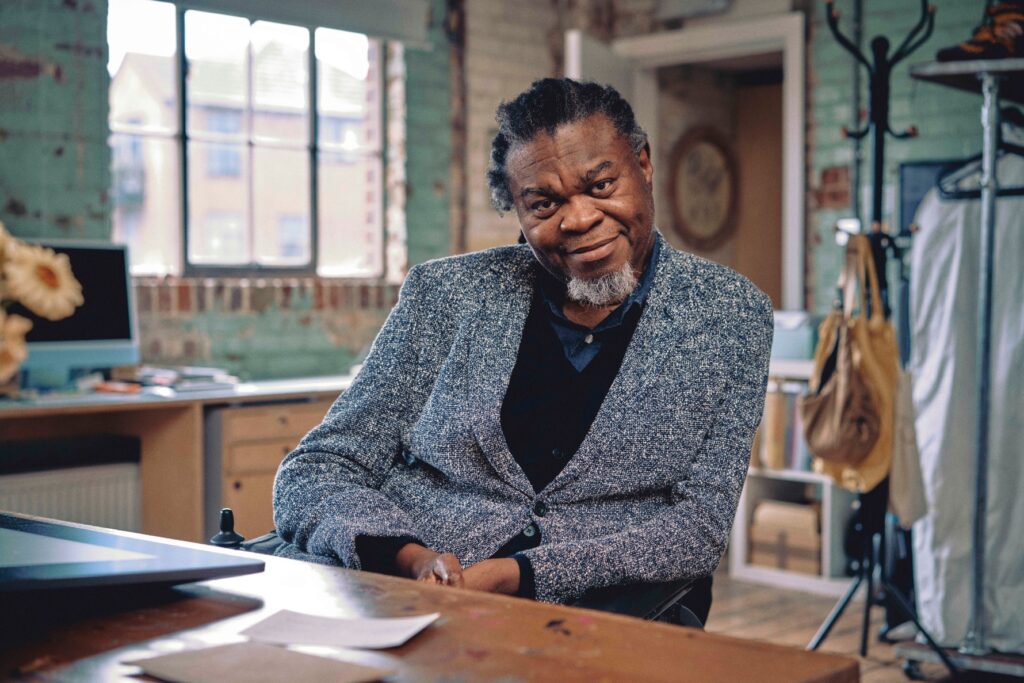
Yinka Shonibare. Photo: Tom Jamieson.
This interview was conducted as part of the Sharing Stories project, in which artists, academics and those with lived experience of some of the key objects in our collection were invited to give their interpretations. This project highlights the myriad of ways we, as humans, can form relationships with artworks much more like other people than inanimate objects. These relationships are deeply emotional and personal, informing the ways we live our lives, the knowledge we choose to pursue, or our artistic practices and modes of expression.
Yinka Shonibare CBE RA, is a British artist living in the United Kingdom. His work explores cultural identity, colonialism and post-colonialism within the contemporary context of globalisation.
In this interview, Shonibare discusses his stunning and powerful work, Hybrid Mask (Baule/Yaure) from the Sainsbury Centre’s collection, with Bea Prutton, Digital Communications and Creative Curator at the Sainsbury Centre.
Y.S. The Hybrid Mask (Baule/Yaure) is from Cote d’Ivoire, in West Africa, and I found it in Picasso’s personal collection. A lot of modernists actually took inspiration from African masks.
The mask is a face with horns, and takes the form of ones typically used in rituals and dance ceremonies, as well as in the performance of some funeral rites as well.
B.P. This piece is so richly multifaceted. Could you tell us a little bit about the ideas, emotions and symbolism that inspired this work?
Y.S. The work is connected to my own [Nigerian] heritage and identity. During my studies of History of Art, I realised that many modernist Western artists were inspired by African art. In my general education, I never found there to be much of an African presence in the Western History of Art, and that absence in the teaching of art history really surprised me.
So, through this work, I wanted to explore my own heritage and also bring the influence of African art and objects into the current conversations about art.
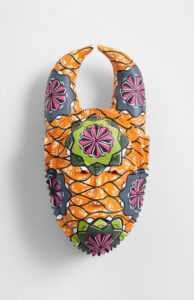
B.P. You talk about African art being absent from that modernist canon, and your desire to change that. How did this motivation influence the piece?
Y.S. I wanted to create the piece from a contemporary perspective. So, it was important to me not to just repeat an image of the original mask, but instead to incorporate contemporary discourse on identity and, most importantly, representation.
Many modernist artists were inspired by African art, including Picasso, Matisse and Man Ray, as well as the Dada movement.
I think it’s great that this project might bring that influence to the fore, and help people understand the important role that African art has played throughout art history.
B.P. How would you describe your own relationship with modernism?
Y.S. It’s a kind of Catch-22 in the sense that, on the one hand I celebrate modern artists, but then I’m also not entirely happy about the degree of exploitation in the power dynamics that existed for those African artists.
I’m an artist, so I appreciate all kinds of art, but I also understand that art can be a tool with which to exercise power over others. Because of that appropriation, many artists of African origin didn’t profit from their own work, and others took advantage of that.
But, I’m not suggesting that people shouldn’t be inspired by art coming from other cultures. As long as artists coming from minority cultures are given due credit for their work, I’m happy.
I will never be dictatorial about what people can be inspired by, otherwise we wouldn’t make great art. Even a lot of the music we listen to, that’s inspired by all different genres to make something fantastic. I wouldn’t want to put restrictions on that. But what we have to be is aware of the exploitation that can go on.
B.P. Absolutely, awareness of those exploitative power imbalances is so important.
The idea that art and music are products of lots of sources of inspiration coming together is a really beautiful image. The batik fabric you emulate in Hybrid Mask has quite a complex history doesn’t it. In a way, it’s Indonesian, and it became associated with the Dutch after the Dutch colonial period. And now it’s strongly associated with Africa.
Can you tell us a bit about that history and how it manifests in the work?
Y.S. Batik is a very colourful wax resist fabric. And the origins of the fabric are actually in Indonesia. So, the Dutch were inspired by Indonesian batik, and they produced the fabric industrially, and then then subsequently sold them in West Africa where they became very popular. And so, the fabrics are now seen by many as African.
I use that fabric style in the work to talk about those historic colonial relationships between Europe and Africa, as well as the contemporary use of batik as a symbol of African identity.
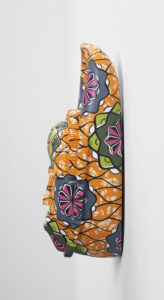
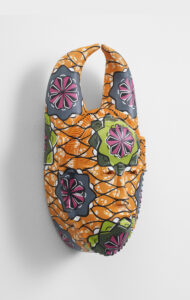
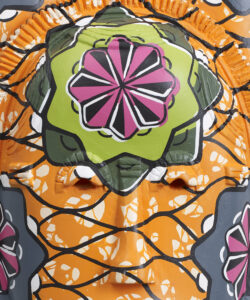
B.P. Visitors are often surprised to learn that the mask isn’t actually covered in fabric!
Y.S. Yes, the mask is covered in batik patterns that, from a distance, make you think it’s fabric wrapped around the mask, but actually the patterns are painted onto wood.
B.P. We’ve touched on hybridity already in talking about those complex historic European, Asian and African trade relationships, and the piece also represents hybridity through the intermingling of human and animal forms. Could you tell us a little bit more about what the work’s title signifies?
Y.S. The reason I chose the title is because the mask itself is a combination of different aspects, particularly different aspects of my own identity and also the fact that the work is referencing a mask in the Picasso collection.
Picasso himself was very interested in this idea of transformation, which he expressed through repeated depictions of the minotaur.
The minotaur is half man and half bull, and they also reference Picasso’s own heritage and the cultural significance of bullfighting, which is quite emblematic of Spain.
Like Picasso, I’m also interested in transformations between man and animal, and how representations of these transformations also can have cultural weight to them.
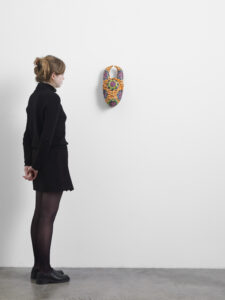
B.P. You have previously expressed a kind of resistance to prescribing interpretation on museum visitors. How important (or unimportant) is it to you that those viewing this piece infer those hybridisations?
Y.S. I generally don’t like to dictate to people in how they read a work of art; I want people to bring their own associations to it.
However, if people are interested in finding out about my reasons for making a work, and how it has been informed by cultural or personal histories, and individual or wider relationships to Western modernism, or African diaspora identities, then they’re very welcome to find those things out. But I genuinely want people to just enjoy the piece.
B.P. That sentiment is really what we are trying to express through the Sharing Stories project: we want our visitors to feel that they can bring whatever knowledge or experience they have to the museum and feel both validated and empowered by their experience here.
Listen to the Sharing Stories tour on the free Smartify app.